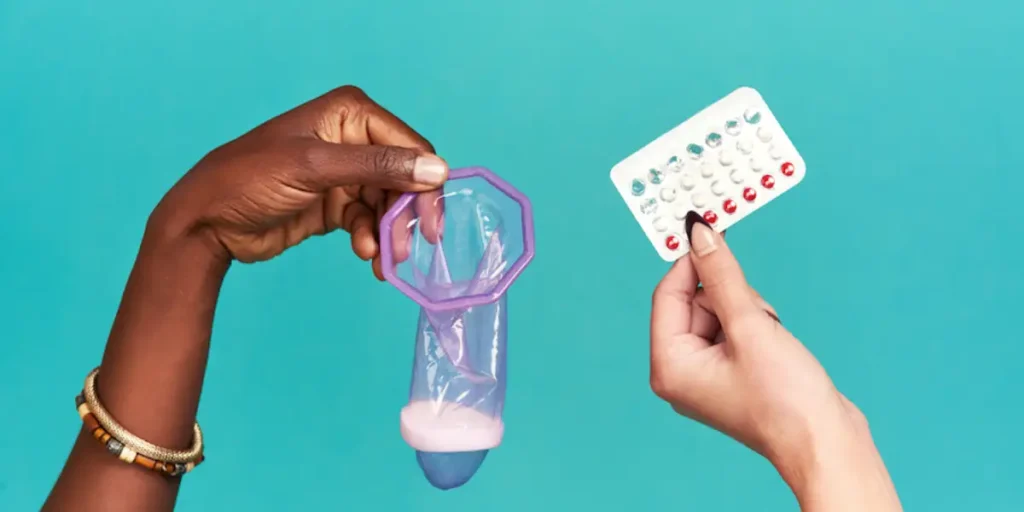If you’re searching for birth control options that don’t affect hormones, you’re not alone. Many people seek effective contraception without the side effects or health concerns linked to hormonal methods like the pill, patch, or hormonal IUDs. Whether due to medical reasons, personal preference, breastfeeding, or lifestyle choices, hormone-free birth control can offer reliable protection while avoiding hormonal influence on your body.
In this detailed guide, we’ll explore the most popular and effective non-hormonal birth control methods, how they work, their pros and cons, and practical advice to help you choose the best option for your needs.
What Are Birth Control Options That Don’t Affect Hormones?
Birth control methods that don’t affect hormones are contraceptives that prevent pregnancy without introducing synthetic estrogen or progestin into the body. These methods work through physical barriers, chemical means, or natural family planning techniques.
Why Choose Non-Hormonal Birth Control?
- Avoid hormone-related side effects like mood swings, weight gain, headaches, or blood clots.
- Suitable for those with health conditions contraindicating hormone use (e.g., breastfeeding, history of thrombosis).
- Preference for natural or hormone-free lifestyles.
- Desire for reversible or occasional contraception without daily medication.
Types of Birth Control Options That Don’t Affect Hormones
1. Copper Intrauterine Device (IUD)
Overview: The copper IUD (e.g., Paragard) is a small T-shaped device inserted into the uterus by a healthcare provider. It can prevent pregnancy for up to 10 years.
How It Works: Copper creates an inflammatory environment toxic to sperm, preventing fertilization. It does not release hormones.
Effectiveness: Over 99% effective.
Pros:
- Long-lasting and reversible.
- No hormones or systemic side effects.
- Can be used as emergency contraception if inserted within 5 days of unprotected sex.
Cons:
- May cause heavier periods and cramping.
- Requires professional insertion and removal.
- Does not protect against sexually transmitted infections (STIs).
2. Barrier Methods
Barrier methods physically prevent sperm from reaching the egg and include:
a. Male Condoms
- Worn on the penis during intercourse.
- Protect against pregnancy and most STIs.
- Available over-the-counter.
b. Female Condoms (Internal Condoms)
- Inserted into the vagina before sex.
- Also protect against STIs.
- Less commonly used but effective.
c. Diaphragm and Cervical Cap
- Silicone or latex devices placed inside the vagina to cover the cervix.
- Used with spermicide to increase effectiveness.
- Require fitting by a healthcare provider.
d. Contraceptive Sponge
- A soft sponge containing spermicide inserted into the vagina before intercourse.
- Blocks sperm and kills them chemically.
Effectiveness: Varies (male condoms ~85% typical use; diaphragms and sponges slightly less).
Pros:
- Hormone-free and reversible.
- Readily available (condoms and sponges OTC).
- Provide some STI protection (especially condoms).
Cons:
- Require correct and consistent use.
- May interrupt spontaneity.
- Some may cause irritation or allergic reactions.
3. Spermicides and Non-Hormonal Vaginal Gels
Overview: Spermicides contain chemicals that immobilize or kill sperm. They come as gels, creams, foams, or suppositories.
Example: Phexxi is a newer non-hormonal vaginal gel that maintains vaginal acidity to slow sperm movement.
Effectiveness: Around 70-80% with typical use; better when combined with barrier methods.
Pros:
- Available OTC.
- Hormone-free.
- Can be used on-demand.
Cons:
- Less effective alone.
- May cause vaginal irritation.
- Must be applied before every act of intercourse.
4. Fertility Awareness-Based Methods (FABM)
Overview: These natural family planning methods involve tracking fertility signals such as basal body temperature, cervical mucus, and menstrual cycle days to avoid sex or use protection during fertile windows.
Examples: Standard Days Method, Symptothermal Method, and apps like Natural Cycles.
Effectiveness: 76-95% depending on method and user adherence.
Pros:
- No hormones or devices.
- Promotes body awareness.
- Can be used to plan or avoid pregnancy.
Cons:
- Requires daily monitoring and discipline.
- Less effective with irregular cycles.
- No STI protection.
5. Sterilization (Permanent Non-Hormonal Option)
Overview: Surgical procedures like tubal ligation (female sterilization) or vasectomy (male sterilization) provide permanent contraception.
Effectiveness: Over 99% effective.
Pros:
- Permanent and highly reliable.
- No hormones involved.
Cons:
- Intended to be irreversible.
- Requires surgery.
- No STI protection.
How to Choose the Best Hormone-Free Birth Control for You

Consider Your Lifestyle and Preferences
- Do you want long-term or short-term contraception?
- Are you comfortable with daily or per-use methods?
- Is STI protection a priority?
Consult a Healthcare Provider
- Discuss your medical history and preferences.
- Get professional fitting for diaphragms or cervical caps.
- Learn about insertion and removal of IUDs.
Combine Methods for Better Protection
- Use condoms with spermicides or fertility awareness methods for increased effectiveness.
- Remember only condoms protect against STIs.
Practical Tips for Using Non-Hormonal Birth Control Effectively
- Always follow instructions carefully, especially for barrier methods and spermicides.
- Keep backup contraception handy in case of method failure.
- Track your cycle accurately if using fertility awareness.
- Schedule regular check-ups if using devices like IUDs.
- Communicate openly with your partner about contraception.
Understanding the Benefits and Limitations of Non-Hormonal Birth Control Options

Choosing birth control methods that don’t affect hormones comes with unique benefits and considerations. Understanding these can help you make an informed decision.
Benefits of Hormone-Free Contraception
- No Hormonal Side Effects: Avoid mood swings, weight gain, breast tenderness, and other hormone-related symptoms.
- Immediate Fertility Return: Most non-hormonal methods allow fertility to return immediately after discontinuation.
- Safe for Various Health Conditions: Ideal for women with contraindications to hormones, such as history of blood clots, migraines with aura, or breastfeeding mothers.
- Natural Body Function: Many methods work with your body’s natural processes without altering hormone levels.
Limitations to Consider
- User Dependency: Barrier methods and fertility awareness require consistent and correct use to maintain effectiveness.
- Menstrual Changes: Copper IUDs may increase menstrual bleeding and cramps.
- No STI Protection (Except Condoms): Most non-hormonal methods do not protect against sexually transmitted infections.
- Learning Curve: Fertility awareness methods require education and daily monitoring, which may not suit everyone.
How Lifestyle and Personal Health Impact Your Choice of Hormone-Free Birth Control
Your lifestyle, health status, and reproductive goals play significant roles in determining the best non-hormonal birth control method for you.
Active Lifestyles and Barrier Methods
- If you have an active sex life with multiple partners, condoms are crucial for STI prevention.
- Diaphragms and cervical caps require planning and insertion before intercourse, which may not suit spontaneous encounters.
Medical Conditions and Non-Hormonal Options
- Women with cardiovascular risks or clotting disorders benefit from avoiding hormonal contraceptives.
- Breastfeeding mothers can safely use copper IUDs or barrier methods without affecting milk production.
Family Planning Goals
- If you desire long-term contraception but want to avoid hormones, the copper IUD or sterilization may be appropriate.
- For those planning pregnancy soon, fertility awareness methods or barrier methods provide flexible options.
Exploring Emerging Non-Hormonal Birth Control Technologies

Research and innovation continue to expand the landscape of hormone-free contraception, offering promising new options.
Vaginal Rings and Gels Without Hormones
- Non-hormonal vaginal rings that release spermicidal agents or other contraceptive substances are under development.
- Phexxi, a vaginal gel that maintains vaginal acidity to inhibit sperm mobility, is FDA-approved and hormone-free.
Immunocontraception
- Experimental vaccines targeting sperm or egg proteins aim to provide reversible, non-hormonal contraception.
- Still in research phases but represent a future avenue for hormone-free birth control.
Male Contraceptive Advances
- Non-hormonal male contraceptives, such as reversible vas-occlusive devices and sperm motility inhibitors, are being studied.
- These could expand hormone-free options for couples seeking shared responsibility.
Managing Side Effects and Expectations with Non-Hormonal Birth Control
While hormone-free methods avoid hormonal side effects, some users may experience other effects or challenges.
Coping with Copper IUD Side Effects
- Initial cramping and spotting are common but usually subside within a few months.
- Over-the-counter pain relievers and heat therapy can ease discomfort.
- Regular follow-ups with your healthcare provider ensure proper device placement.
Addressing Barrier Method Challenges
- Allergic reactions to latex or spermicide can occur; consider hypoallergenic options.
- Practice insertion techniques for diaphragms and cervical caps to increase comfort and effectiveness.
Fertility Awareness Method Adjustments
- Track your cycle diligently, especially if it fluctuates due to stress, illness, or lifestyle changes.
- Use apps or consult with trained instructors to improve accuracy.
The Role of Partner Communication and Shared Responsibility in Hormone-Free Birth Control

Non-hormonal birth control often involves active participation from both partners, making communication vital.
Discussing Contraception Preferences
- Open conversations about method choice, comfort, and concerns foster mutual understanding.
- Partners can share responsibility by using condoms or supporting fertility awareness tracking.
Building Trust and Cooperation
- Hormone-free methods may require planning and cooperation, especially for barrier methods.
- Mutual respect and support enhance adherence and satisfaction with chosen methods.
How to Access and Afford Non-Hormonal Birth Control Options
Access and cost can influence your ability to use hormone-free contraception effectively.
Where to Obtain Non-Hormonal Methods
- Condoms, spermicides, and some diaphragms are available over-the-counter at pharmacies.
- Copper IUDs and cervical caps require prescriptions and professional fitting.
- Fertility awareness education can be accessed through healthcare providers, certified instructors, or online programs.
Insurance Coverage and Assistance Programs
- Many insurance plans cover IUD insertion and removal.
- Some community health clinics offer low-cost or free contraception.
- Check local resources for financial assistance programs.
Budget-Friendly Tips
- Buy condoms in bulk to reduce cost.
- Learn proper care and storage for reusable devices like diaphragms.
- Use free or low-cost fertility tracking apps.
Frequently Asked Questions About Birth Control Options That Don’t Affect Hormones
Can I use non-hormonal birth control if I have irregular periods?
Fertility awareness methods may be less reliable with irregular cycles; barrier methods or copper IUDs may be better suited.
How soon after removal of a copper IUD can I conceive?
Fertility typically returns immediately after removal.
Are there any risks associated with copper IUDs?
Rarely, IUDs can perforate the uterus or cause infection; proper insertion by a trained provider minimizes risks.
Can men use non-hormonal birth control?
Yes, condoms and vasectomy are hormone-free male contraceptive options.
Are non-hormonal methods as effective as hormonal ones?
Some non-hormonal methods like the copper IUD are just as effective as hormonal options. Others, like barrier methods, require consistent and correct use to be effective.
Can I use non-hormonal birth control while breastfeeding?
Yes, non-hormonal methods are safe during breastfeeding and do not affect milk supply.
Do non-hormonal methods protect against STIs?
Only condoms (male and female) provide protection against most STIs.
What if I want to switch from hormonal to non-hormonal birth control?
Consult your healthcare provider to discuss timing and method options that suit your health and lifestyle.
Conclusion
Choosing birth control options that don’t affect hormones empowers you to take control of your reproductive health without unwanted hormonal side effects. From highly effective long-term solutions like the copper IUD to accessible barrier methods and natural family planning, there are numerous hormone-free options to fit diverse needs and lifestyles.
